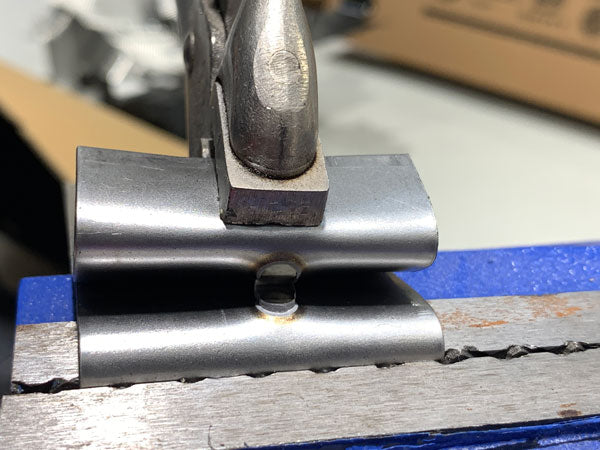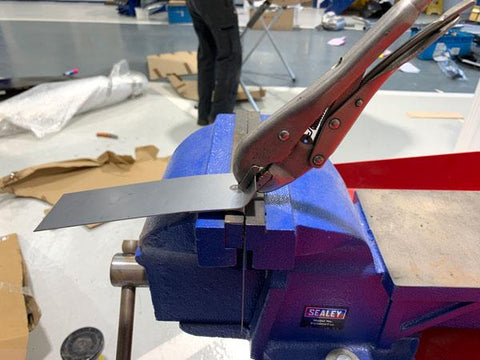Need Some Help? 0161 223 1843
Need Some Help? 0161 223 1843

December 12, 2019 3 min read
Spot welding has moved on a lot in a modern bodyshop with lots of manufacturers selling "Smart" or "Automatic" welders now. These spot welders do give good quality results, so you may be thinking do I really need to still do a peel test anymore? The simple answer is yes, the welder is not always right sometimes it cannot identify the stack and so it struggles to perform correctly. If you interested in finding more out about this we wrote a blog post called " ARE SMART SPOT WELDERS REALLY SMART? on this subject.
Peel testing gives you a visual reference that the weld you are producing is of the correct size, shape and integrity as required.
Some people say weld a plate to the vehicle and pull this, this as far as I'm concerned is a big no on three levels
When you are welding you are only interested in the melting temperature of the panel you are putting on. The rest of the stack does not melt, its the thinnest panel, the one your replacing that melts into the other panels on the vehicle ( stack).
You therefore only need to know the melting point of this steel not the rest of the stack.
Cut two nice sized plates out of your new panel and clean off the cathodic coating.
Place the steels in. a line on top of each other with 1/3 overlap.

Either in manual mode (preferred) or smart mode make a spot on the two sheets of steel in the overlapped 1/3
Bend one of the long ends down 90 degrees as shown

Using the curve if the mole grips as a pivot, place the curve away from the vice and grip the short end of the test piece.

Pull the vice grip around so that the curved end meets the steel.
Keep on pulling down until you tear a nugget

The nugget size can then be observed and measured.
Note the sample will tear in the HAZ (heat affected area) of the spot weld.
Do not twist or go backwards and forwards to obtain the nugget. A clean tear is the best result.

There are lots of formulas for spot welding nugget out there like " the nugget diameter should be 5x metal thickness" or 5*t1/2, “t”
What these formulas fail to take into consideration is weld shunting effect, bonding and lots of other criteria that may affect the weld although they are a good start.
Manufacturers do a lot of testing of welds and the vehicle was originally welded taking into consideration all the factors that are needed for weld strength, so if no exact weld parameters for your weld are offered in repair procedures I would always recommend that your nugget diameter achieved should be the same as the manufacturer's sized weld on the vehicle. Always replace like for like.
In some circumstances, you may be required to record the registration number on the plate and keep it for future inspection.
If you have any questions or would like to know more please contact us
Comments will be approved before showing up.